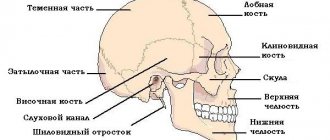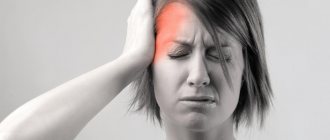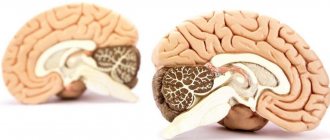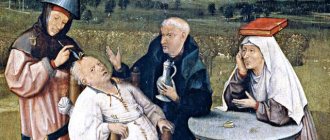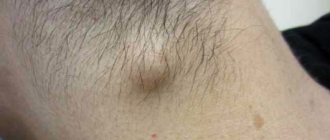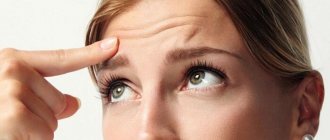Causes and nature of pain in the back of the head
Pain in the occipital region can be caused by various factors. There are quite a lot of reasons. There are harmless factors that do not require special treatment, and those that cannot be ignored.
When there is no reason to worry
The causes of pain in the back of the head can sometimes be the most commonplace. If unpleasant sensations occur primarily or extremely rarely, then the following factors may be to blame:
- hunger;
- staying in an uncomfortable position for a long time;
- smoking;
- stress;
- excessive alcohol consumption;
- large dose of caffeine;
- frequent consumption of products with chemical additives.
The occurrence of pain in the back of the head due to these factors does not require special treatment. It is enough to remove the causes of discomfort.
Pain in the back of the head as a sign of pathology
When unpleasant sensations do not go away for a long time or they are acute, this indicates that something is wrong in the body. Typically, the cause of pain in the back of the head is vascular, neurological diseases and disorders of the musculoskeletal system. Moreover, each pathology has its own symptoms, the sensations will be of a different nature:
- Myositis is characterized by inflammation of muscle tissue. A person complains of pain in the back of the head on the left or right side. The pathology is provoked by hypothermia or prolonged stay in an uncomfortable position or injury. Discomfort originates in the neck, moves to the back of the head and to the area between the shoulder blades.
- Cervical osteochondrosis is the most common cause. Due to the destruction of the intervertebral discs, unpleasant sensations are localized not only in the back of the head, but also in the neck, shoulders, and shoulder blades. A person complains of constant dull pain. It can even radiate to your temples, and intensify when you turn your head or bend over. With osteochondrosis, so-called cervical migraine often occurs. In this case, there is pain in the back of the head on the left or right side, spreading to the ocular periosteum and temples.
- Spondylosis of the cervical spine is characterized by the degeneration of connective tissue into bone. Growths form on the discs, limiting mobility. Pain in the occipital region is felt constantly, even at rest. It radiates into the ears, eyes, and temples. When turning or tilting the head, lumbago may be felt.
- Hypertension is accompanied by attacks of pain in the back of the head at the base of the skull. Almost always it is pulsating and strong. Painful sensations are accompanied by rapid heartbeat, weakness, and nausea. The left or right side of the back of the head hurts. After an attack of vomiting, a person experiences relief.
- High levels of intracranial pressure provoke pain in the back of the head or throughout the entire head. The nature of the sensations is bursting, pressing. Loud sounds and bright lighting lead to increased discomfort. The condition is also accompanied by bouts of vomiting, but after them there is no relief.
- Myogelosis is characterized by pain in the back of the head on the right or left side, depending on the area in which muscle circulation is impaired. The condition is aggravated by stiffness of movement and dizziness.
- Neuralgia caused by inflammation of the occipital nerve provokes very excruciating, sharp pain. The pathology occurs due to hypothermia or degenerative diseases of the spine. Along with the back of the head, the pain affects the jaw area and ears. Any movement increases the torment.
- Vascular pathologies (spasms of the arteries) provoke significant discomfort in the back of the head, spreading to the forehead. The nature of the pain is pulsating, paroxysmal. A person experiences relief only in a state of rest.
- Excessive physical activity, if it provokes discomfort in the back of the head, indicates the presence of a disease of the vascular system (narrowing, fragility). With physical overexertion, pain of moderate intensity.
- Abnormal development of the bite often causes pain in the back of the head on the left or right. It radiates to the ear and parietal region. In the evening the discomfort intensifies.
All these conditions require diagnosis and correct treatment. Otherwise, the situation will only get worse.
Why does my neck and head hurt in the back at the base of the skull?
More often, the symptom occurs due to incorrect body position during sleep. Purchase an orthopedic mattress and pillow to eliminate the condition. Less commonly, the pathology is provoked by insufficient physical activity and curvature of the spine.
There are cases when a systemic disease occurs that affects the cervical-brachial region:
- Inflammatory joint diseases. Arthritis and arthrosis provoke a narrowing of the joint cavity, bone growths, and a decrease in the production of synovial fluid. Gradually, the cartilage becomes thinner, the bones begin to rub against each other. They compress blood vessels and nerves, causing pain.
- Osteochondrosis. Thinning of the intervertebral disc leads to compression of the nerve trunks emerging from the spinal cord. Inflammation and mechanical damage occurs, causing severe pain.
- Injuries. Mechanical damage occurs in the upper vertebrae of the cervical spine, the back of the skull. This results in pain at the back of the head.
- Stooping, moderate to severe scoliosis. The vertebrae are positioned incorrectly in relation to each other, and neuralgia occurs.
- Difficulty in circulation. It is formed due to blockage, rupture, or narrowing of blood vessels in the occipital or vertebral region. The condition is caused by ischemic disease, endothelial fragility, thrombosis, thrombophlebitis, atherosclerosis, diabetes mellitus.
- Muscle spasms, tension. They are formed during inflammatory pathologies caused by convulsions, exposure to cold temperatures, and sudden movements.
All pathologies cause pain. Additional clinical symptoms are formed. According to it, the doctor assumes a diagnosis, but it is determined with accuracy after examination. A general blood and urine test, coagulogram, determination of rheumatoid factor, X-ray, MRI are prescribed.
Which doctor treats pain in the back of the head?
If unpleasant symptoms are bothering you more than once, you should go to see a therapist or your family doctor.
Based on complaints and the results of initial examinations, the doctor will write a referral to a specialist. He will already be engaged in more accurate diagnosis, development of a treatment plan, and monitoring of the patient. Subspecialty specialists who treat pain in the occipital region include neurologists. During the diagnosis, you may need to consult other doctors (otolaryngologist, ophthalmologist, dentist, allergist, psychiatrist, endocrinologist).
Recommended Treatments
Conservative methods are most often used for treatment. These include:
- Medications. Painkillers, anticonvulsants and anti-inflammatory drugs, muscle relaxants, and antidepressants are prescribed. They are used in the form of tablets, injections, patches and ointments.
- Wearing a collar of Chance. This is indicated for fractures and bruises of the cervical spine. The device can be rigid, ensuring complete immobility of the neck. There is also a soft collar that partially supports the neck.
- Physiotherapy. Reflexology is used - applying low-intensity electric current to the neck in combination with painkillers. Ultrasound is no less useful - during the procedure, muscle spasms are relieved, blood circulation improves, and the severity of pain decreases.
- Therapeutic massage and manual therapy. During the sessions, muscle tension is eliminated, the specialist acts on biologically active points, blood flows better to the tissues, they are enriched with oxygen, which speeds up the recovery process.
- Physiotherapy. When selecting a set of exercises, the doctor takes into account that the cervical, pectoral and lumbar muscles develop during exercise. This will ensure further normal distribution of the load on the spine.
Surgical intervention is required for benign and malignant neoplasms. Surgery is prescribed if damage to the vertebrae has led to compression of the spinal cord.
Diagnostics
To clarify the cause of pain in the back of the head, additional examinations will be required. The specialist is already able to determine the type of pathology at the examination stage. However, modern diagnostic methods make it possible to assess the extent of damage and localization. Existing methods:
- Electroencephalography (EEG) is a highly informative way to study brain activity. The technique helps to assess his general condition and possible vascular pathologies. The study also shows indirect signs of neoplasms.
- X-rays are carried out to determine the presence of pathologies in the structure of the skull and bones. The image will show degenerative changes in the spine and the consequences of injuries.
- Magnetic resonance imaging (MRI) is used to detect cerebral circulation disorders, the appearance of tumors, the consequences of a stroke and many other pathologies. Read more about MRI→
- Computed tomography (CT) allows you to diagnose hemorrhages, changes in the structure of tissues and blood vessels. The study provides information about the presence of atherosclerosis, tumors, aneurysms, cysts, and thrombosis. Read more about CT→
- Electromyography (EMG) is a diagnostic method that allows you to determine pathologies of the neuromuscular system.
- Ultrasound diagnostics (ultrasound) is carried out to clarify the nature of various problems with blood vessels (reduced lumen, disruption of the course of the artery, provoked by osteochondrosis).
Based on the clinical manifestations, the doctor chooses the diagnostic method in each case individually.
Causes of pain
Occipital pain can be caused by the following reasons:
- Stretching and straining of muscles. This can be caused by working in a sedentary position and lack of physical activity during the day. Therefore, office workers and drivers often complain of unpleasant sensations in the back of the head.
- Spinal injuries. Pain is observed after falls and impacts, causing fractures and bruises.
- Malignant and benign neoplasms. The tumor grows over time and begins to compress the spinal cord and nerve endings, leading to pain.
- Diseases of the spine and back muscles. These include arthrosis, arthritis, osteochondrosis and myositis.
- Previous spinal surgeries.
Pain can also appear due to diseases of the internal organs. It is observed in diseases of the throat, esophagus, and brain. This kind of pain is called referred pain.
Treatment
Eliminating pain in the back of the head on the right or left implies influencing the cause that provokes it. Depending on these factors, therapy is planned. In this case, the doctor takes into account the individual characteristics of the patient and the presence of concomitant pathologies. Existing treatment methods:
- Laser and ultrasound therapy help relieve inflammation and tension. The procedures improve local blood circulation and the condition of blood vessels.
- Electrophoresis is also prescribed to relieve pain by normalizing blood circulation. After the procedure, swelling, inflammation, and muscle tone decrease.
- Magnetotherapy is based on the beneficial effects of magnetic fields on the cells of the human body. The result is noticeable only after a course of procedures.
- A course of massage plays an important role in complex therapy. For degenerative changes in the cervical spine, procedures help normalize blood circulation and metabolic processes.
- Physical therapy exercises are aimed at eliminating muscle tension. This is achieved by normalizing blood circulation.
- Acupuncture involves influencing biologically active points on the skin.
- Therapeutic and diagnostic blockades (injection of anesthetics directly into the source of severe pain).
- Radiofrequency ablation of the occipital nerves has a therapeutic effect in inflammatory processes in nerve tissues. High-frequency current pulses are passed through them, generating heat.
- Drug treatment for degenerative changes in the spine involves the use of anti-inflammatory drugs (Nimesil, Meloxicam, Diclofenac), vasodilators (Actovegin, Trintal), chondoprotectors (Structum, Dona, Chondroxide).
- For vascular pathologies, drug treatment is aimed at normalizing the state of the bloodstream and pressure. Drugs are prescribed on an individual basis. And to relieve pain, Spazmalgon, No-Shpu and other tablets are usually prescribed.
Treatment of discomfort in the back of the head that is not caused by disease is much simpler. It is enough to follow the recommendations of the neurologist regarding the prevention of recurrence of attacks.
What types of neck pain require urgent emergency care?
Painful sensations accompanied by:
- decreased strength or sensitivity in the upper and lower extremities (a symptom may indicate damage to nerve fibers);
- increased body temperature;
- increased sweating at night;
- intense pain in the head area;
- feeling of drowsiness;
- disorientation in space and time;
- the appearance of discomfort in the chest area;
- difficulty breathing;
- impaired swallowing (appearance of pain during the act of swallowing);
- deterioration of the condition during physical activity and stress.
Prevention
First of all, you need to lead a healthy lifestyle. Proper, nutritious nutrition and the absence of bad habits play a big role in the condition of all body systems:
- Proper nutrition implies adequate consumption of vegetables, dairy products, fish, meat, cereals, and fruits. In this case, it is necessary to exclude or reduce the presence of alcohol, confectionery, smoked meats, and fatty foods in the diet.
- Daily exercise allows you to maintain good condition of the muscular system, blood circulation and metabolic processes in the body.
- When you have pain in the right or left side of the head (right- or left-handed), you should pay attention to the working conditions. If your job is sedentary, you should take frequent breaks for at least a few minutes to stretch your neck muscles.
- It is necessary to avoid hypothermia and exposure to drafts.
- Physical activity must be properly dosed.
- It is important to stop smoking and drinking excessive alcohol.
The habit of undergoing a medical examination on time for preventive purposes makes it possible to detect the disease at the initial stages of its development. In such cases, it is much easier to eliminate it even before the person starts to have a headache in the back.
Author: Tatyana Grosova, nurse, especially for Vertebrolog.pro
What consequences can result from failure to timely seek help from a qualified doctor?
First of all, failure to seek medical help in a timely manner leads to a worsening of the disease, the process becoming chronic and the development of complications, such as:
- protrusion;
- formation of intervertebral hernia;
- kyphosis;
- radiculitis;
- spinal cord stroke;
- atrophy of the muscles of the limbs;
- paralysis.
This is explained by the fact that in the neck area there are many vital vessels, arteries and capillaries, and any disturbances in this area can lead to unpleasant consequences, the supply of insufficient oxygen to the brain, hypertension, and vegetative-vascular dystonia.
The functioning of the shoulder and elbow joints, the thyroid gland and other organs may deteriorate; this is due to pinched nerves and compression of blood vessels.
In addition to pain in the neck, a person may be bothered by headaches (migraines), problems associated with visual perception may appear, because the artery responsible for supplying blood to the organs of vision passes through the neck.
Which neck treatment should I choose?
Treatment of pain in the back of the head and neck is tailored individually, based on the characteristics of the course of the disease. The main goal is to eliminate the causative factor. Drug and physiotherapeutic treatment is prescribed that meets the indications.
- anti-inflammatory and analgesic drugs are used for pain relief, and muscle relaxants are used to eliminate muscle spasms;
- injuries and defects are treated with manual therapy;
- specially selected vitamin and mineral complexes and therapeutic exercises are certainly prescribed;
- sessions of electrophoresis, ultrasound, physiotherapy, and laser treatment are useful. They restore blood circulation, reduce the production of lactic acids, eliminate pain and burning in the back of the head;
- The last resort is surgery. It is used for severe, prolonged pain and stiffness of movement caused by serious pathology and rapid deterioration of the patient's condition.
Physiotherapy
Procedures using magnetic fields, lasers, currents, and acoustic waves are widely used as part of complex therapy for diseases of the neck and upper spine. The positive effect of physiotherapy is explained by its selective and local effect on the deep layers of tissue.
The use of procedures not only alleviates the patient’s condition, but also allows one to reduce the dosage of medications, or even do without them altogether.
In the acute period of diseases, most physiotherapeutic methods are contraindicated. For osteochondrosis the following is prescribed:
- dynamic and low-frequency currents;
- electrophoresis;
- magnetic and shock wave therapy;
- transcutaneous electrical stimulation;
- laser treatment;
- ultrasonic vibration.
Physiotherapy is a very effective therapeutic method, but still auxiliary. In the initial stages of the disease, several sessions are sufficient to improve the condition.
The procedures have a beneficial effect on the immune system, help eliminate inflammation and prevent relapses of the disease. By improving blood microcirculation, oxygen along with nutrients is supplied to the damaged areas.
The method is inexpensive and accessible, and is not contraindicated during pregnancy.
Massage and physical therapy
Massage manipulations are prescribed only by the attending physician after diagnosis. The doctor writes a referral to a specialist based on the examination performed and the patient’s existing contraindications.
For pain in the neck and back of the head, massage of the collar area is prescribed. It helps eliminate muscle spasms and improve blood circulation.
An excellent addition to massage is physical therapy. Its goal is to strengthen the ligaments and muscles in the upper neck and back. Regular exercise stretches the spine and reduces the load on the intervertebral discs.
A set of exercises is compiled by a doctor individually, taking into account the disease and physical data of the patient. The training consists of the following cycles: warm-up, gymnastics itself and stretching. If you follow this sequence, the body is adjusted to work properly.
During gymnastics, it is important to monitor your breathing and increase the load gradually. For beginners, 10 repetitions of each exercise is enough. Example:
- Stand straight, tilt your head forward and press your chin to your chest. Wrap your fingers around the back of your head, gently press on it, tilting your head forward even more and pointing the back of your head up.
- Tilt your head in different directions, at the same time you need to squeeze your forehead with your fingertips.
If some exercises cause discomfort, it is recommended to avoid them for a while. Subsequently, when the muscles become trained, the exercises will be easier. They should be included in the training process gradually.
Take a vacation
Many people work with constant muscle tension. We are forced to spend the whole day standing or sitting, unable to relax.
When we come home, we are in no hurry to rest, but immediately start doing household chores, after which we sit down again at the computer or in front of the TV. But it’s important to give tired muscles a rest.
Don’t neglect your health, take a break from work every couple of hours. A short warm-up, like in school, with circular movements of the head and bends back and forth and to the sides, is useful. Warming up will help you take your mind off work and relieve mental and mental stress.
When you get home, take 10 minutes to stretch out on a mat or floor and just lie there. Orthopedic mattresses are helpful to ensure that you get the most beneficial night's sleep.
How to relieve pain
If you have pain in the neck, you need to relax - lie on the bed and take a comfortable body position. It is advisable not to use a high pillow; it is better to lie down without one.
If this does not help, you can relieve pain with ice. To do this, put ice in a bag, crush it a little, and wrap it on top with a terry towel. Then apply it to the sore spot. Do not allow ice to come into direct contact with the skin, as this can cause a thermal burn.
To relieve headaches, you can place a towel soaked in cold water on the forehead or back of the head. Relief should occur within a few minutes.
Applying heat can also help relieve severe symptoms. To do this, pour warm water into a bottle and apply it to the sore spot. You can stand under a hot shower. Heat increases blood circulation, so relief comes.
Preventive measures
To prevent neck pain, you must follow a number of recommendations:
- Follow a salt-free diet to avoid salt deposits in the joints. This is one of the main causes of vertebral diseases.
- Lead an active lifestyle, play sports - swimming, running. It is recommended to exercise daily.
- Dress according to the weather, avoid hypothermia and drafts.
- When working sedentarily, do exercises at least once every 2-3 hours.
Following these recommendations will help prevent the occurrence of spinal diseases.
Neck pain can indicate various diseases. Therefore, when it appears, it is recommended to consult a doctor. The doctor will diagnose and prescribe the correct treatment. Timely therapy will help avoid complications.
Why does my neck hurt? Pain in the right neck, causes. Pain in the left neck, causes
The neck (in Latin Cervix) is a part of the human body that connects the head and torso and performs a number of important functions for the body. Pass through it:
- spine
- the larynx, through which the air inhaled by a person enters the lower respiratory organs
- esophagus, through which food enters the lower gastrointestinal tract
- blood vessels that carry blood from the heart to the brain
- The lymph nodes
- spinal canal (within the seven cervical vertebrae)
- nerves
The human neck has a complex structure and performs the most important functions for the body.
Due to its complex structure and variety of functions, the neck is very vulnerable. Simply put, there is something to be sick about, and there will always be a reason.
The localization of tsverkalgia very often makes it clear what its cause is. Only the neck can hurt (right, left, lower at the base, in front, behind). Also, the pain may radiate to the arms, back or head.
Muscle spasm is one of the main causes of neck pain on the right or left.
Neck pain on the right or left occurs in children and adults, regardless of gender. She can:
- localized directly in the spinal region
- give into hand
There can be many reasons for neck pain on the right or left:
- Muscle spasm. It happens with prolonged physical stress on the neck or, conversely, due to lack of load. Often the neck muscles spasm due to sudden turns of the head, pain in this case occurs immediately or a day after the injury. You can wake up with tsverkalgia on the right or left if you slept in an uncomfortable position
- Hypothermia. Under the influence of low temperatures and drafts, the neck muscles (myositis) or nerves (neuralgia) can become inflamed.
- Osteoarthritis. This disease is characterized by damage to the intervertebral joints. In this case, pain on the right or left is often accompanied by another striking symptom - torticollis.
- Osteochondrosis. It affects the cervical region most often, since its vertebrae are smaller than the rest, but they are constantly loaded. In addition to pain, osteochondrosis is manifested by numbness and burning of the neck, shoulders and arms down to the fingertips, dizziness when turning the head
- Intervertebral hernia. Most often, it occurs between the 5th and 6th, 6th and 7th vertebrae. In this case, the pain often radiates to the left or right shoulder.
- Narrowing (stenosis) of the spinal canal. If the spinal cord is damaged, cervicalgia may be accompanied by numbness of the limbs, general weakness, dysfunction of various organs and their systems
- Meningitis. Inflammation of the lining of the brain provokes neck pain and tension. One way to determine meningitis: the patient lies on his back and pulls his bent legs towards him, while he experiences acute cervicalgia
- Oncology. The neck may hurt due to tumors in the brain, in the cervical spine, as well as with metastatic tumors of other organs (breast, lungs, prostate, etc.)
- Lymphadenitis. Inflamed lymph nodes, for example, after a sore throat and other infectious diseases of the respiratory system, create pain in the neck on the right or left side
- Other. The causes of unilateral cervicalgia can be arthritis, osteomyelitis, tuberculosis, polio, tetanus, heart disease, and other pathological conditions of the body.

